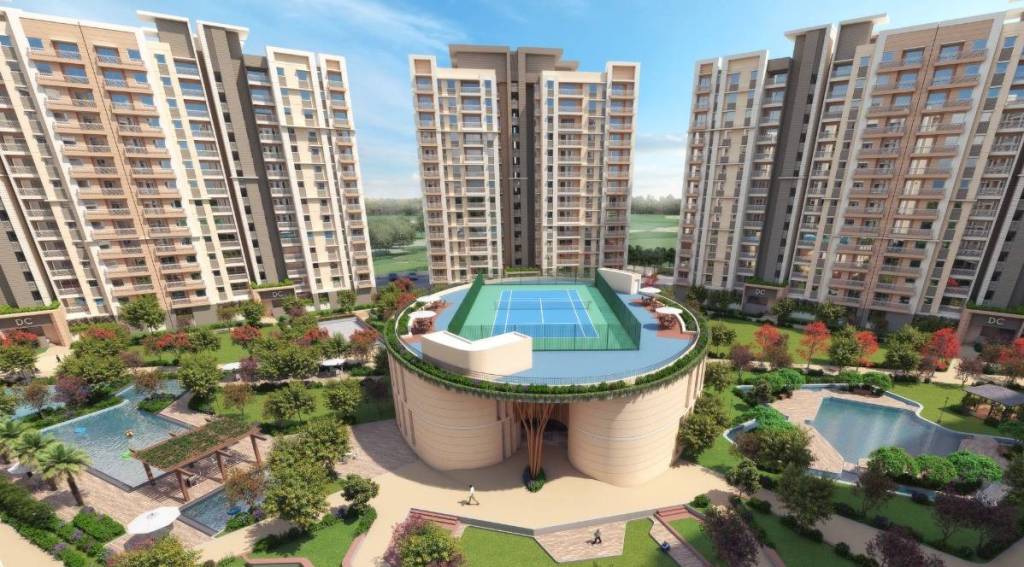There has been a perceptible change in the urban scene in India of late. The trend is reversed migration—from big, cluttered metropolises to smaller and more manageable Tier II cities. This new urban exodus is reshuffling real estate in these emergent urban centers full of opportunities but challenges for developers, investors, and potential home buyers
Individuals are now migrating from leading metropolitan cities such as Mumbai and Delhi to Tier II cities for various causes. This received a boost with the outbreak of the COVID-19 pandemic, especially seeing that working from home became possible for many professionals. Generally, the elevated cost of living in metros as well troubles like traffic jams, pollution and space constraints have made many people to look for quality life in small towns. The use of Tier-II cities proves that living becomes more balanced in all the aspects and negative charges, including crowdedness and slow development.
Those with resources and the ability to migrate have swiftly moved back to Tier II cities, which has brought about high impacts on the realty sector. This has led to upsurged demand for residential as well as commercial property with the recent migrants. With cities like Pune, Ahmedabad, Jaipur, and Chandigarh witnessing real estate boom, developers are jogging hard to match the demand with apartments and modern office spaces. The residential real estate market is changing in tier-II cities.
Also Read: Consumer Alert! 6 types of people who MUST NOT get a credit card
In short, there is an increase in demand for spacious apartments, walled apartment communities, and integrated townships that house facilities very much similar to metros. It is looking for the right mix of space, comfort, and connectivity. This led to a price increase in property rates in most Tier II cities, though remaining way below what is seen in the major metros.
The exponential growth in commercial real estate in the Tier-II cities is also under way. Growing numbers of companies, with increasing hybrid work models or satellite offices in smaller cities, have been noticing a growing demand for modern office spaces, coworking facilities, and IT parks. This has attracted domestic and international investors who eye high returns from these upcoming markets. Rohtak on its part represents a pretty interesting case study of the real estate market. Located in Haryana, just 70 kilometers from Delhi, it has fast been developing in recent past. The city has seen both residential and commercial projects coming up with big numbers and a number of big developers entering this market.
Hence, the proximity to Delhi, aided by better infrastructure and educational institutes, has turned Rohtak into one of the options for those looking to escape the congestion in the national capital while being within commutable distance.
Infrastructure is one of the major drivers of growth in real estate in Tier II cities. Improved road connectivity, an expanding airport, and different smart city projects have made these cities more life- and business-friendly. Thereby, a self-supporting circle of development is underway: much-needed improvements in infrastructure that attract more people and businesses motivate further improvement in infrastructure. These also bring problems in their wake as the urban exodus continues. The worries are enormous with unplanned development and extra pressure on already groaning infrastructure. Tier-II cities are still grappling with the sudden rush of new citizens that has resulted in rolling water shortage problems, traffic congestion, and a virtually nonexistent waste management system.
This will require local authorities and urban planners to work proactively to ensure sustainable development that preserves the quality of human life for which millions of people have been drawn to the cities of the twenty-first century.
This is also happening in the real estate segment of major metros. Demand is still commencing at these locations, but they have clearly started showing downshift in their peripheral areas of the big cities. With other new opportunities, it is the Tier-II cities that are increasingly being eyed by developers and investors, which can again bring more balanced urban development across the country.
The implications for this trend in relation to India’s urban landscape and economy are going to be deep. Tier-II cities shall fast turn to the new growth engines of the country with an inflow induced by talent, business, and investments. This shall more represent growth in its character, distributed, and obviously bring relief to the overcrowded metro, perhaps induce some regional imbalances in development. In a nutshell, it is this urban exodus into Tier II cities that is dramatically going to change the face of real estate in India. This is excitingly full of potential for further growth and development but also poses problems that need to be addressed through careful planning and adopting sustainable practices in civil engineering.
The real challenge within this dynamic trend will be in the event that all developers, investors, and policymakers come together to fight for the correctness of this great migration and ensure that it results in an advantageous outcome for both cities and their residents.
(By Shiv Garg, Director, Forteasia Realty Pvt Ltd)
Disclaimer: Views expressed are personal and do not reflect the official position or policy of FinancialExpress.com. Reproducing this content without permission is prohibited.

